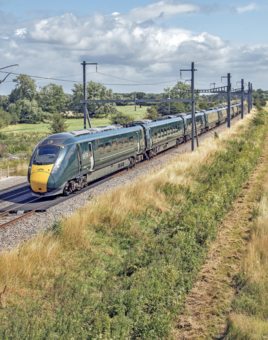“At the moment, we are set up as either a rail infrastructure or electricity infrastructure operation. I think there could be some real opportunities for saying: how do we do this differently and would regulators support that?”
According to Shaw, this is already happening on the roads. National Grid is currently in discussion with Highways England, which is planning the new East Thames Crossing. This could lead to an agreement whereby special ducting is installed as part of the build which could then be used to carry electricity cables across the river.
However, when it comes to using railway land for cabling, Shaw appreciates that nothing will happen overnight. “It’s a long burn, this one,” she says.
Network Rail’s Doughty says discussions have taken place in the past but haven’t progressed much further: “The railways are very expensive corridors and most of the demand on the network is at peak times, so we have this system that could provide an opportunity to the wider transmission and distribution system.”
So, assuming that there are sufficient sub-stations and distribution solutions, there are still two other big issues going forward: firstly, the sheer quantity of electricity required to run the railway; and secondly, the costs of upgrading the network. Finding the cash is probably the biggest constraint.
Mann explains: “Typically, our railways have been built to a smaller gauge than is the standard on the continent. As a result, we are usually using the last inches to get electrification in - and often that means rebuilding half the bridge, lowering the tracks inside tunnels, and having to redo things such as drainage.”
And that, according to some, means doubling the budget for railway improvements at a time when the Government is actively looking at ways to save money.
Late last year, after previously promising record spending on infrastructure as part of the levelling-up agenda, the Government quietly removed around a billion pounds from the railway budget instead.
That decision may need to be revisited in the light of moves to decarbonise and the costs involved, which have yet to be fully quantified. Network Rail’s Traction Decarbonisation Network Strategy puts the bill at an estimated £18 billion in the North and Midlands alone, although, as the National Infrastructure Commission pointed out in its report last year, much more detailed work is needed on costings.
Elsewhere, the Government is investing vast sums in encouraging green energy generation.
In March, ministers announced a £92 million challenge that will enable green innovators to drive forward the next generation of technologies. The cash will be focused on three areas, including energy storage technologies, floating offshore windfarms, and biomass production.
The Government has already been providing large subsidies for the production of energy from wind, following the introduction of Feed-in-Tariffs that help to ensure that profits can be made by those investing in wind farms.
And it seems to be working. In 2019, wind power became the UK’s second largest source of electricity, providing almost a fifth of the nation’s total generation.
The Government has also been investing in nuclear power. Although its share of power generation has fallen as the older Magnox power stations have closed, construction of new facilities such as Hinkley Point C will help to increase the share into the 2030s.
The company behind Hinkley is EDF Energy. It’s building two reactors there, and at the same time marking a significant milestone in the revitalisation of the UK’s nuclear power industry.
The arrival of Hinkley Point C will also significantly boost the output from nuclear generation, at a time when many of the current UK nuclear power stations will come to the end of their lives over the next decade.
Paul Spence, Director of Strategy and Corporate Affairs at EDF, says: “We need to run even faster to get where we need to be. And that means building onshore wind and solar at a relatively unprecedented rate. It means massive acceleration in offshore wind building, and it means pushing on with more nuclear faster than we have done so far.”
EDF has announced the closure of three of the older advanced gas-cooled reactor nuclear power stations, with more to follow.
Construction of Hinkley Point C has now reached about the halfway stage, and the opening of the new facility will add back slightly more power generation than is being lost through the announced closures.












